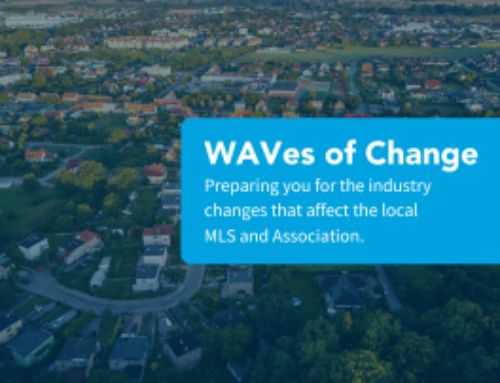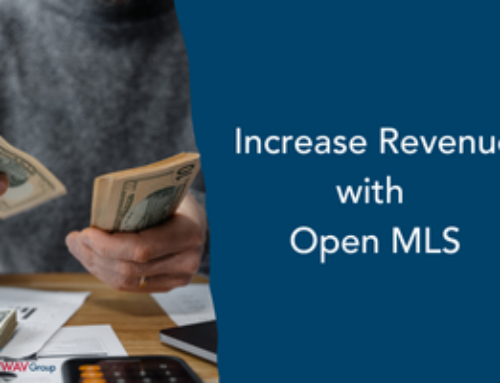MLSs and Associations of REALTORS® are facing budget woes. The decline in the housing market created a cascading impact on dues revenue. The number of subscribers to MLS service has retreated to 2006 averages, coupled with membership losses to Associations of REALTORS®.
In isolated real estate markets around the country, MLSs and Associations have become creative at building revenue streams outside of subscription fees and membership dues. Advertising is chief among them.
As you have read in leading real estate media sources like RE Technology, Inman News and RIS Media, there are a number of companies that are supporting MLSs and Associations with generating revenue through advertising. This can be achieved in two ways, advertising inside the MLS system and advertising outside the MLS system. Whatever your choice, this information may help you get started.
Advertising inside the MLS system has its technical and political challenges. You must be careful that the advertising is not getting in the way of the Agent’s work. You must also insure that there is no impact to system performance. Aside from those risks, MLSs typically generate more page views in the MLS than any other website. If you choose this path, do it carefully as it could result in member agitation if it slows down the MLS system. Advertising does reduce the speed of page loading, and in some cases, may interfere with MLS system programming.
Advertising on consumer facing sites is more common as it does not have the risks associated with the MLS system performance or integration. As we have learned from WAV Group WIN Reports, many MLSs and Associations with consumer facing websites generate a lot of page views from property search. In unusual cases like Houston, they may generate more traffic on their consumer site than they do in the MLS system.
As we have learned by studying Realtor.com, Zillow, Trulia, Homes.com, and Homefinder – there is a significant revenue opportunity available when you monetize that consumer traffic with advertising. Here are a few things that you should know about advertising that may help you get started.
Advertising is offered in four basic product groups: Sponsor Advertising, Cost Per Thousand Impressions, Cost Per Click, and Cost Per Conversion. As the publisher, you choose how you sell advertising on your website.
- An example of Sponsor Advertising is the relationship between Lowes and the National Association of REALTORS. Lowes pays a lot to be the exclusive vendor in their category.
- Cost Per Thousand Impressions (CPM) is the most popular form of advertising today. You may receive anywhere from $.02 to $35 per thousand times that you display an ad. At a CPM rate of $10, you collect $10 for every thousand times an ad is displayed.
- Cost Per Click (CPC) was made popular by Google. They have so much advertising inventory that they would burry any advertiser on CPM charges. As a result, Google only charges when a consumer clicks on an ad. This assures the advertiser that they are getting their monies worth. It is not unusual for advertisers to pay $1 to $5 per click.
- Cost Per Conversion – Some advertisers are only interested in paying for advertising if they generate a lead. In this case, the consumer clicks a banner and fills out a form. What the advertiser pays for conversion is typically based upon the value of that lead. A mortgage company that gets a consumer to apply for a loan will pay a lot more than a landscaper getting a lead on lawn mowing.
When considering generating revenue from advertising, you have a number of choices. You can do it yourself using ad serving services like OpenX or ZEDO, or use a real estate specific ad serving network (IMAPP or REALM). Another option is to do a hybrid where you sell and manage some of the ad inventory and use the network to backfill for impressions that you have not sold.
If advertising is not your thing, but you are looking for other ways to generate non- dues revenue – here is a short list:
- Vendor IDX fees
- Broker data feed fees
- Offer IDX to members/agents
- Offer Virtual tours to members/agents
- Offer Photography or Video Services
- Offer Print Services (magazines, flyers, etc)
- Offer Advertising to third parties.
Prepare to be underwhelmed. No single non-dues revenue strategy is inspiring by itself. Combining these strategies is an effective way to generate significant revenue to offset operational costs, and reduce the pressure on a dues-driven business. In aggregate, they make a difference.
If you are planning to launch any of these programs, be sure to create a comprehensive plan for board approval. Your plan must include vendor selection; articulation of your investment and resource allocation; revenue forecast; progress reporting; budget amendments; and a strategy for driving revenue or benefits back into your organization or out to your shareholders.
Numerous WAV Group Consulting clients have realized overall strategic effectiveness with non-dues revenue programs. In some cases, these programs reduce dues and resulted in rising membership by being more competitive in MLS of choice or board of choice competitions. In other cases, the programs drove top line revenue without increasing fixed costs that allowed for revenue sharing or enhanced membership programs.
WAV Group has a depth of experience helping MLSs and Associations match the right strategy to fit your organization. Contact Victor Lund or any WAV Group partner if you would like to get support with this area of your strategic development.





